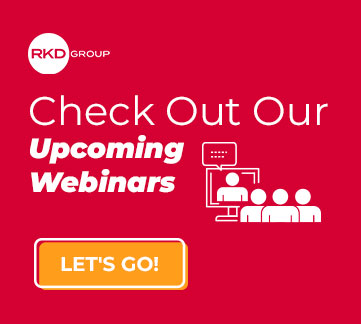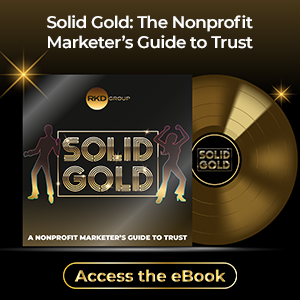As we head into 2020, there may not be a hotter trend in the fundraising world than donor-advised funds (DAFs). Their rapid rise has been the talk of the nonprofit industry, and donors are reaping the benefits of this growing option for philanthropic giving.
How fast is this trend rising? In 2018, the charitable assets in DAFs totaled $121 billion – up more than $50 billion from just five years ago.
Contributions from donor-advised funds made up 12.7 percent of all charitable giving last year. That means $1 in every $8 donated last year came from a DAF.
Wow.
In light of this, many of our nonprofit partners have asked us what they should do. We’re here to offer our counsel on how you can harness the benefits of donor-advised funds and make them a growing element of your direct-response fundraising program.
WHAT ARE DONOR-ADVISED FUNDS?
Before we dive in to our advice, let’s discuss what donor-advised funds are – and what they aren’t.
A DAF acts as an intermediary that takes a donor’s charitable contribution and distributes it to nonprofit organizations handpicked by the donor. In some ways, they are like a private foundation on a smaller, simpler scale.
For a good understanding of the difference, National Philanthropic Trust has a detailed explanation here. Some key advantages of DAFs over foundations include:
- Easy startup, low costs and minimal administrative work
- Donor controls how the money is distributed
- Higher tax deduction limits
A big challenge for nonprofits is that gifts – often called “grants” – from donor-advised funds don’t come through traditional marketing channels like direct mail or email. The donation will come from a charitable “sponsor” that manages the funds (e.g., Fidelity or Schwab) and works on behalf of the donor.
This can be tricky when it comes to donor engagement and stewardship.
Nevertheless, you should embrace DAFs. They can fit neatly into your multichannel marketing plans. But you may need to step back and take a high-level view of your channels and programs.
For example, you may find that a $1,000 gift from a DAF can be attributed to a donor in your current direct response or event program. They receive your mail, emails and digital ads but are no longer giving through one those channels. Instead, they are giving through the DAF.
Moving forward, the trick is figuring out how to connect with these donors in a relevant, meaningful and disciplined way. Here are five suggestions to get started:
1. MAKE DONORS AWARE OF DAFS
First, you need to publicize that you accept grants from donor-advised funds. The goal here is not to encourage people to start a DAF, but to gain the attention of those who already have one.
Provide information about DAFs in your newsletter and marketing materials. Add a reminder about them in your gift receipts. Set up a DAF page on your website. Promote DAF giving in your digital media.
Also, it’s important to include donor-advised funds as a giving option on your direct mail reply slips and online donation pages. This is money the donor no longer owns, so they are more likely to be engaged and are oftentimes more generous.
Create a culture of education on the topic of donor-advised funds to keep them top of mind.
2. ADD A DAF WIDGET
There were 728,563 donor-advised funds in 2018, and the average DAF is estimated to be $166,653. Yet roughly 80% of this money sits around unused.
You need to provide a path to action. The best way is by including a direct link to the DAF Direct widget everywhere.
Every email. Every landing page. Every event page. Every donation form.
Make it as easy as possible for donors to give from their DAFs to your organization.
You want your donors to remember, “Oh yeah, I set up a donor-advised fund. I need to do something with this money.” If you’re in front of them when this thought pops up, you’re likely to be one of the recipients.
3. IDENTIFY YOUR DAF DONORS
Once a donor has given from their DAF, make the effort to identify them properly in your donor database. One of the biggest problems nonprofits face is thinking these donors have lapsed because we are not properly registering their gift.
We suggest marking the donor with a “soft credit,” while noting the charitable sponsor as the “hard credit.” It’s important to flag these donors properly when it comes to future communications and asks.
You can’t send them a receipt – they’ve already received the tax benefit – but you can begin your relationship with them by sending an impactful thank you.
Reach out to them, and they will reach back. They chose your organization for a reason, and they want to continue to feel good about the good they’re doing.
4. ENGAGE WITH YOUR DAF DONORS
Now that you know who they are, invite them to tour your facility. See if they’d like to volunteer or learn more about a specific program.
If they’ve given a large gift to you, they most likely want to be involved in some way. It’s up to you to provide opportunities for them.
The biggest piece of advice we can provide here: Don’t ignore these valuable donors simply because they didn’t come from your traditional marketing channels.
You also need to develop a cultivation track for those who have given through DAFs. This should look similar to your mid-major donor communications.
5. MAKE THE NEXT GIFT EASY
You’ve researched who the donor is behind the DAF, and you’ve started to engage them. Now it’s time to think about the second gift.
Don’t try to convert them to giving through traditional channels. Continue to steward them by suggesting another DAF gift.
A great approach here is to encourage DAF donors to set up recurring gifts. The structure of a donor-advised fund makes it perfect for monthly or annual giving. The funds are already sitting there, and they won’t need to remember to pick the charity and set up the gift.
All in all, donor-advised funds are here to stay and becoming a huge part of the fundraising universe. This is a group of donors you can’t afford to ignore.
Take our advice and start planning now.





Leave a comment: